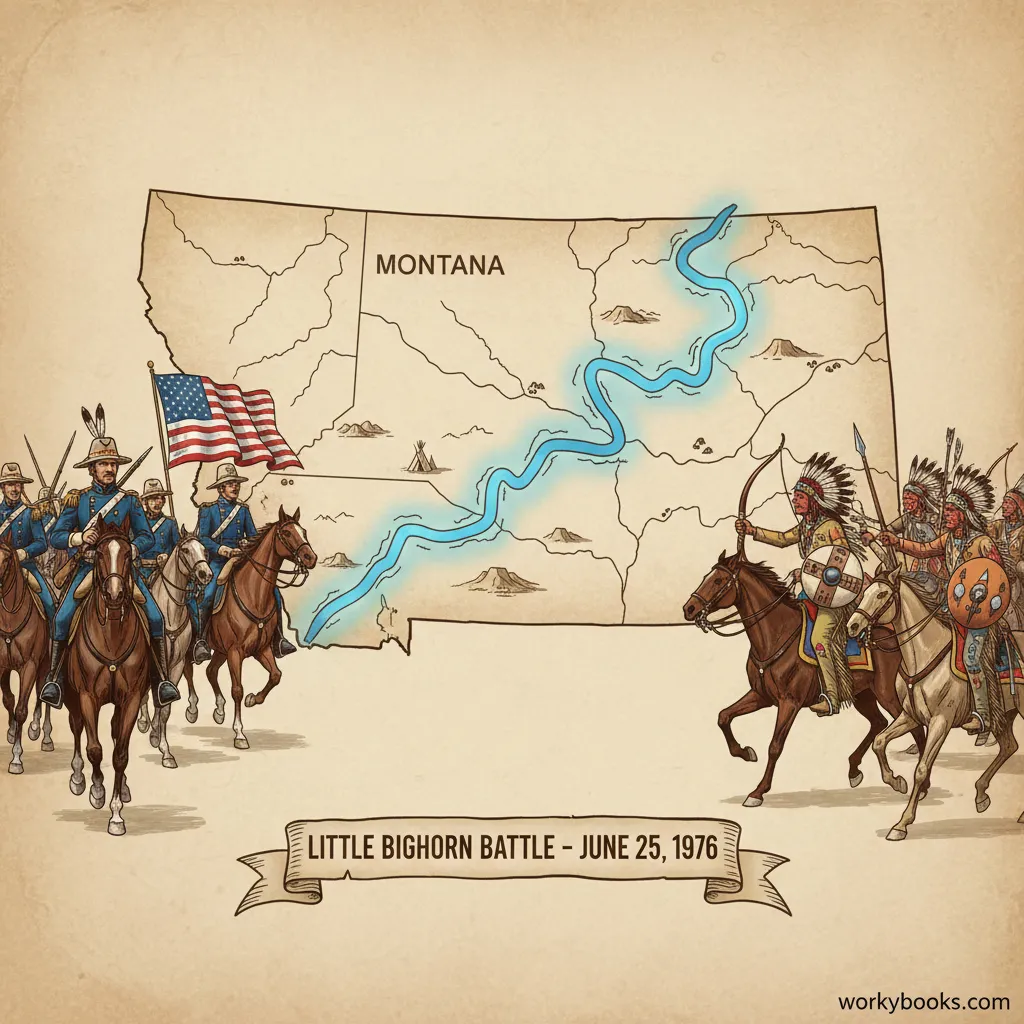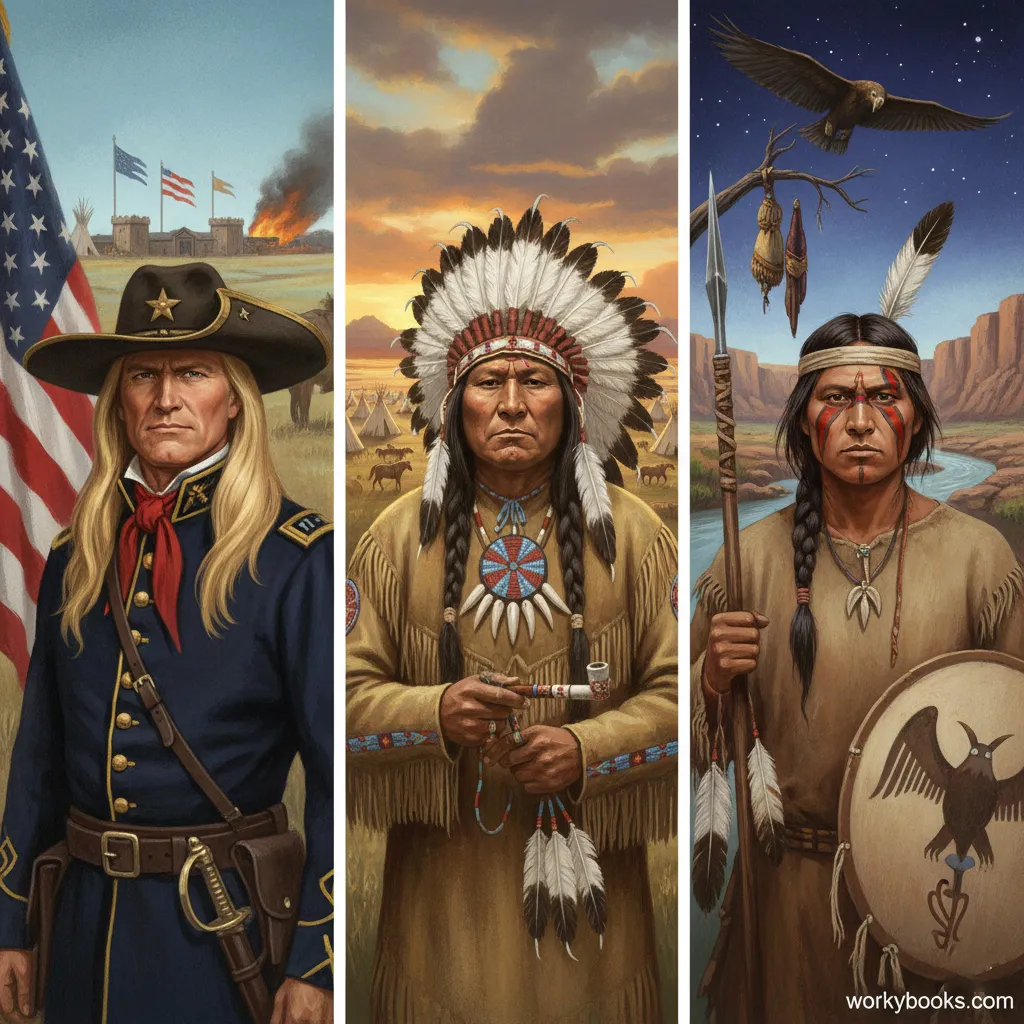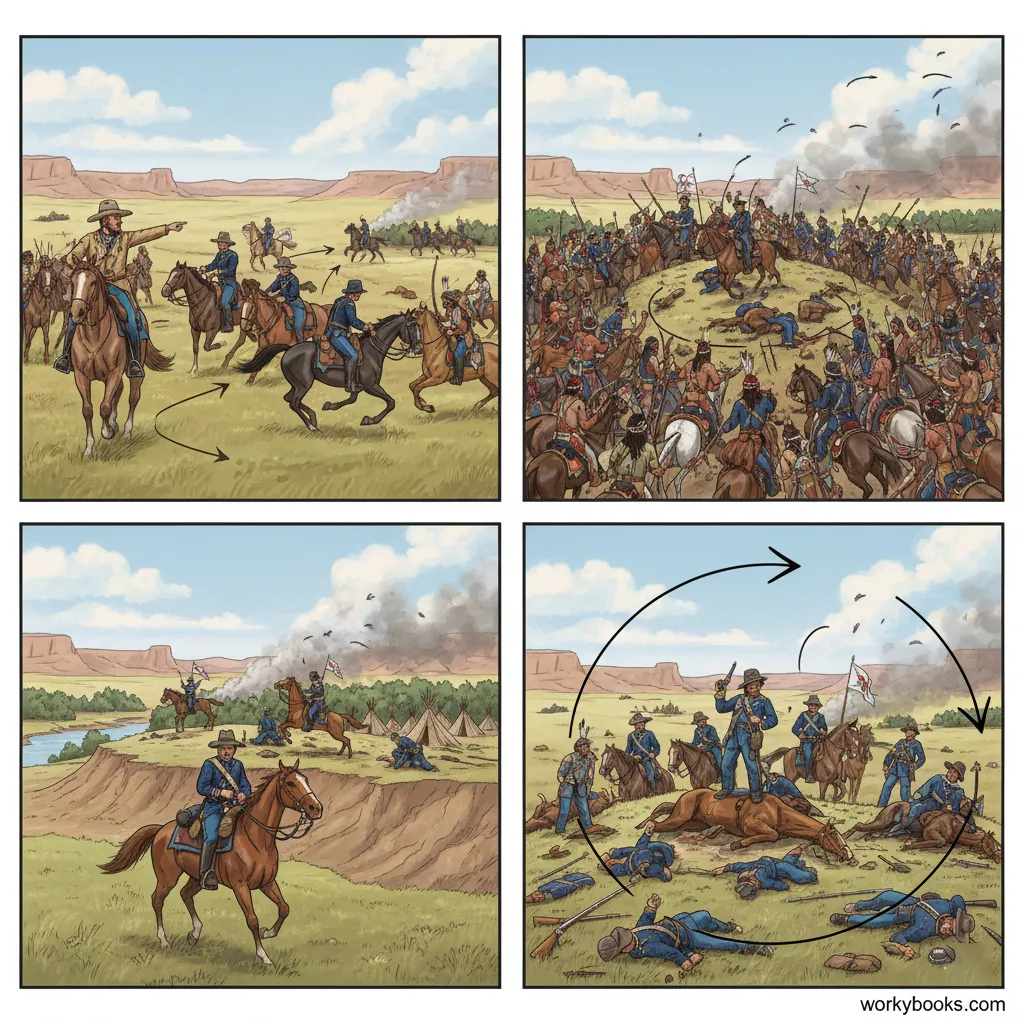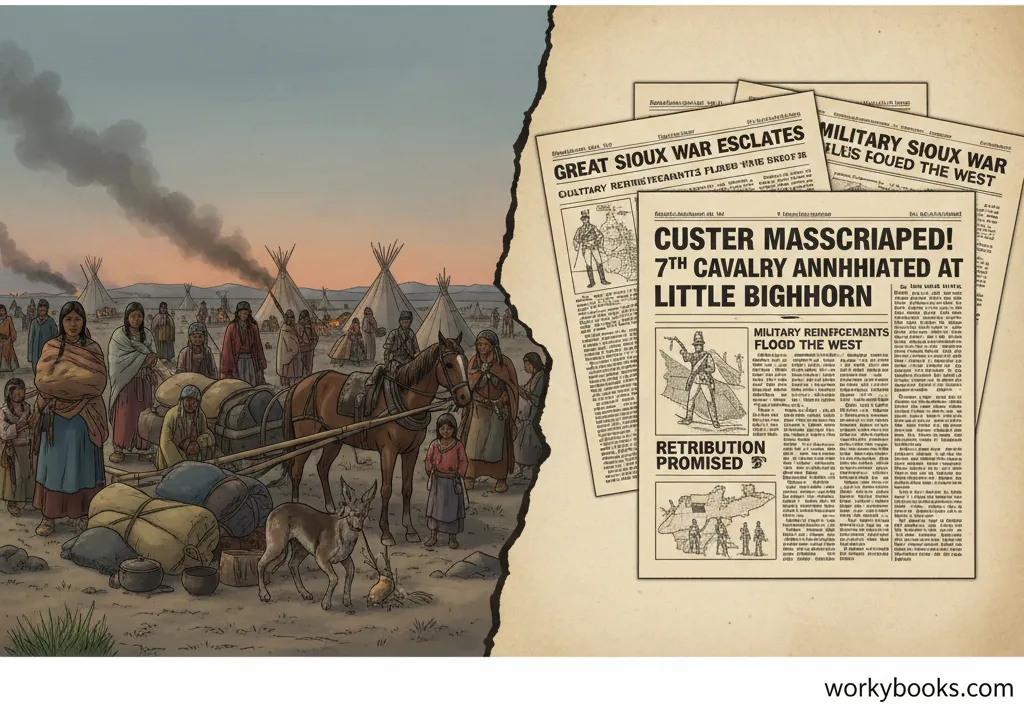Battle of Little Bighorn
Understanding a Key Event in the American Indian Wars
What Was the Battle of Little Bighorn?

The Battle of Little Bighorn, also known as Custer's Last Stand, was a major conflict fought on June 25-26, 1876, between the United States Army and a coalition of Native American tribes. This battle was part of the larger Indian Wars that occurred as American settlers moved westward.
The battle took place near the Little Bighorn River in what is now Montana. It was a significant victory for the Lakota Sioux, Northern Cheyenne, and Arapaho tribes, who were fighting to protect their traditional lands and way of life from being taken over by the U.S. government.
History Fact!
The Battle of Little Bighorn is one of the most famous military engagements in American history and has been depicted in many books, paintings, and films.
Key Figures in the Battle

Several important leaders played crucial roles in the Battle of Little Born:
Lt. Colonel George Custer
U.S. Army commander who led the 7th Cavalry Regiment. He was known for his bold tactics and flamboyant personality.
Sitting Bull
A respected Hunkpapa Lakota holy man and leader who helped unite the tribes against U.S. expansion.
Crazy Horse
An Oglala Lakota war leader known for his bravery and brilliant military strategies.
Major Marcus Reno
One of Custer's subordinates who led part of the attack but was forced to retreat.
Captain Frederick Benteen
Another of Custer's officers whose delayed reinforcements may have affected the battle's outcome.
These leaders made critical decisions that shaped the battle's outcome. Custer's decision to attack a much larger Native American force without waiting for reinforcements proved disastrous for his troops.
What Happened at the Battle

The Battle of Little Bighorn unfolded over two days with several key events:
Custer's Plan
Custer divided his 600 soldiers into three groups to attack the Native American village from different directions.
Reno's Attack
Major Reno attacked the southern end of the village but was quickly overwhelmed and forced to retreat.
Custer's Advance
Meanwhile, Custer moved north to attack from a different angle, unaware of how large the Native American force was.
The Surrounding
Warriors led by Crazy Horse and others surrounded Custer's unit of about 210 men on a ridge.
The Last Stand
Custer and all his men were killed in what became known as "Custer's Last Stand."
The battle was a complete victory for the Native American coalition, but it would ultimately lead to increased U.S. military efforts to control the tribes and their lands.
Significance of the Battle

The Battle of Little Bighorn had important consequences for both Native Americans and the United States:
Short-Term Impact
The Native American victory was celebrated, but it shocked the American public and government.
Increased Military Response
The U.S. Army intensified its campaign against the Plains tribes.
Public Perception
Custer was portrayed as a hero in the press, while Native Americans were often depicted as savage.
Long-Term Consequences
Within a year, most of the victorious tribes had been forced onto reservations.
Historical Legacy
The battle became a symbol of both Native American resistance and the tragic conflicts of westward expansion.
While the Native American coalition won the battle, they ultimately lost the wider conflict as the U.S. government increased pressure on tribes to give up their lands and move to reservations.
Did You Know?
The site of the battle is now the Little Bighorn Battlefield National Monument, which honors all who fought there, including markers for fallen Native American warriors.
Battle of Little Bighorn Quiz
Test your knowledge with this quiz! Answer all 5 questions to see how much you've learned about the Battle of Little Bighorn.
Frequently Asked Questions
Here are answers to some common questions about the Battle of Little Bighorn:
History Facts About the Battle of Little Bighorn
Discover some fascinating facts about the Battle of Little Bighorn and its historical context!
Custer's Reputation
Before Little Bighorn, George Custer was already famous as a "boy general" from the Civil War, where he became a brigadier general at just 23 years old.
Weapon Differences
Many Native American warriors at Little Bighorn had repeating rifles, while the cavalry soldiers were armed with single-shot carbines that took longer to reload.
Changing Memorials
In 1991, the U.S. government changed the name of the battlefield from "Custer Battlefield" to "Little Bighorn Battlefield" and added a memorial to honor the Native American warriors who fought there.
Sole Survivor
Comanche, Captain Myles Keogh's horse, was the only surviving member of Custer's immediate command found on the battlefield after the fight. The horse became a living legend at Fort Riley, Kansas.


